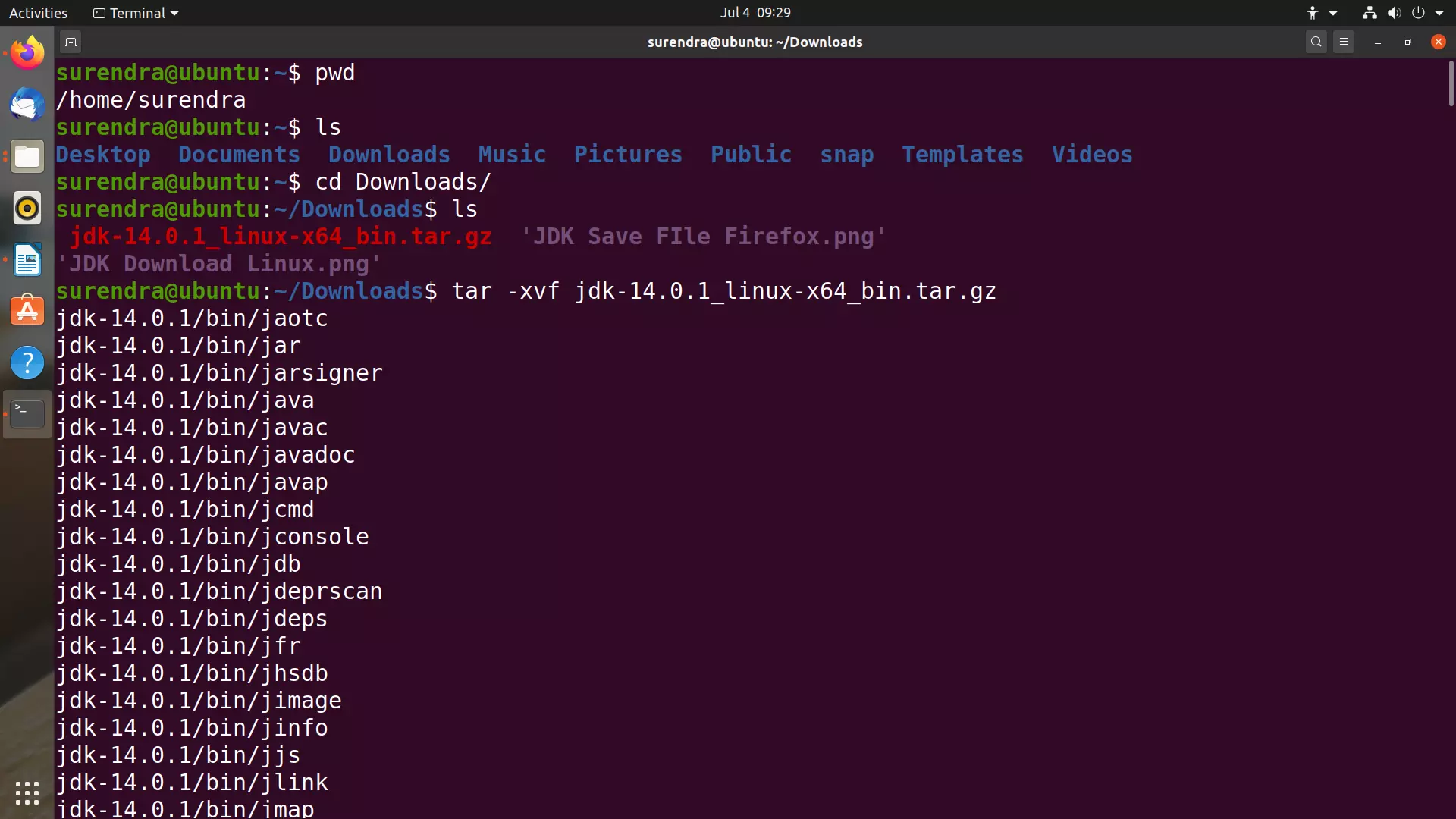

In this example we want to extract rar/rar.txt and rar/license.txt from the archive.
Linux untar file archive#
We can also extract multiple files without extracting the whole archive we will add all files and directories we want to extract one by by. $ tar -xvf rarlinux-圆4-5.4.0.tar.gz rar/rar.txt Extract Multiple Files In this example we will extract file rar/rar.txt from archive. We will specify the file or directory we want to extract after the archive name. In this example we will extract all content of the rarlinux-圆4-5.4.0.tar.gz $ tar -xvf rarlinux-圆4-5.4.0.tar.gz Extract Entire Archive Extract Single FileĪnother useful example is extracting single file from the tar.gz archive. We will use tar command with -xvf option. This will extract all file into new directory. The most used operation is extracting entire archive. In this example we will list contents of rarlinux-圆4-5.4.0.tar.gz $ tar -tvf rarlinux-圆4-5.4.0.tar.gz List Files and Directories Extract Entire Tar.gz Archive We will use tar command with -tvf option to list them. Once you have pulled the file the tar operation will work as expected, most modern versions of linux/bsd have a 'smart' tar, which doesn't need the. Wildcard file expansion (the ) does not work for the get command. List Files and Directoriesīefore extracting or uncompressing the tar.gz file we generally need to list file and directories in the archive. Firstly, if you want to use wildcards for the file name that you're getting from the server you need to use mget instead of get.

Linux users can search for terminal from the Dash, click on Applications and then select System Tools or hold down Ctrl, Alt and T to start up a terminal window. You’ll need to first open up a command prompt using whichever procedure is most comfortable for you.
Linux untar file how to#
gz command is used to compress, extract and list files and directories. Method 1: How to Untar a File from the Command Line. Gz is the gzip format which is provided by all of the Linux, Unix and BSD files systems. Detailed tutorial about tar command be found in the following link. Usually, it’s a folder with the handle ‘file-1.0’.

Type this command prompt into the command prompt: f There are several folders that contain files. This is most used technique before compression. How Untar A Tar File In Linux To uncompress a gzip tar file (.tgz or.tar.gz) or another compressed format (.tzip2 or.bin2) run a special command in the command prompt. Tar is very old and popular format used to put separate file and directories into single file. In this tutorial we will look how to extract them easily. As a Linux system administrator we generally face with tar.gz extension files. A lot of files like source code, backup, configuration files etc. –no-anchored: informs it that the patterns apply to member names after any / delimiter.Tar and gz formats very popular in Linux, Unix and BSD world.–wildcards: instructs tar to treat command line arguments as globbing patterns.-z: filter archive through gzip, use to decompress.-j : filter archive through bzip2, use to decompress.-v: Verbose (show progress while extracting files).$ tar -xf cbz.tar -wildcards -no-anchored '*.php' $ tar -xf cbz.tar -wildcards -no-anchored 'pic*' For example, to extract from cbz.tar all files that begin with pic, no matter their directory prefix, you could type: You can also extract those files that match a specific globbing pattern (wildcards). $ tar -extract -file=cbz.tar css Wildcard based extracting $ tar -xvf Įxtract a directory called css from cbz.tar: Extracting Specific FilesĮxtract a file called etc/default/sysstat from tarball: To extract specific archive members, give their exact member names as arguments, as printed by -t option. GNU tar can be used to extract a single or more files from a tarball.


 0 kommentar(er)
0 kommentar(er)
